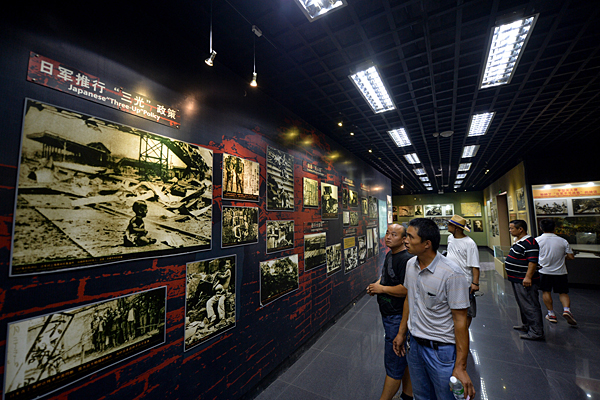| Somber Celebrations | | At present, Japanese right-wing politicians are seeking to deny the country's dark past and amend its post-WWII pacifist constitution, moves that have shocked observers the world over. Under such circumstances, China's commemoration of the victory of the war serves to remind right-wing Japanese politicians and the international forces backing them that China has not relaxed its guard against Japanese militarism | | more | | |
 | | Between War and Peace | |
Sixty-nine years ago, on August 15, 1945, Japan unconditionally surrendered to the Allies, marking the end of China's War Against Japanese Aggression and World War II (WWII). With the war ended and peace resumed in Asia, billions of people had the chance to breathe a sigh of relief, recover and rebuild their lives. This included about 70 million Japanese.
In memory of the hardship suffered and struggle waged by the Chinese people in this war, the Standing Committee of China's National People's Congress in February this year designated September 3 as the Victory Day of the War of Resistance Against Japanese Aggression, and December 13 as the National Memorial Day to commemorate over 300,000 Chinese killed by Japanese aggressors during the 1937 Nanjing Massacre.
| | Full Story | |
|
|
|
| Main Phases of China's War Against Japanese Aggression | |
First Phase: July 1937-October 1938
During this period, China adopted the strategy of "trading space for time." The Chinese army sought to delay the Japanese advance to northern and eastern cities, to allow the home front to retreat to Chongqing. As a result of Chinese troops' "scorched earth" strategies, the consecutive Japanese advancements and conquests began to stall in late 1938.
Second Phase: October 1938-April 1944
The main Chinese objective was to prolong the war. Therefore, the Chinese army adopted the concept of "magnetic warfare" to attract advancing Japanese troops to definite points where they were subjected to attacks.
The CPC and other local guerilla forces continued to distract the enemy and make their deployment over China difficult. As a result, the Japanese effectively controlled only the cities and railroads. By 1940, the war had reached a stalemate.
Third Phase: April 1944-August 1945
Japan conducted its final offensive in China. Although large areas were captured in this massive operation, the Japanese army was stretched to the limit, allowing China to take back cities lost in the conflict.
(Compiled by Beijing Review) | | |
|
